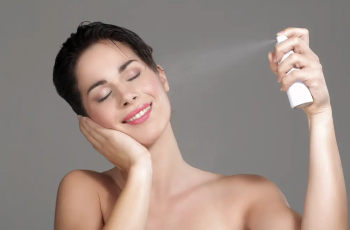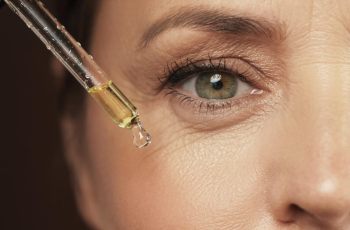
.webp)
.webp)
.webp)
Although harmless, these small spots—called “melasma”—can appear on both light and dark skin and become a source of self-consciousness!
.webp)
.webp)
They appear as “coffee with milk” colored patches, spreading across the face, neck, hands, or legs… But don’t worry, there are solutions to both prevent and reduce them!
.webp)
.webp)
.webp)
How Do They Form?
.webp)
.webp)
The explanation lies in melanin, a natural pigment in our body that determines the color of our eyes, hair, and skin.
.webp)
.webp)
.webp)
It’s the substance responsible for giving the skin its brown tone when tanning and plays a crucial role in protecting against ultraviolet rays.
.webp)
.webp)
However, when our body produces too much of it, brown, red, or pink spots may appear, disrupting the skin’s even tone.
.webp)
.webp)
.webp)
The opposite can also happen! When the body produces insufficient melanin, this is known as hypopigmentation, causing the appearance of white spots, typically seen on darker skin.
.webp)
.webp)
But the sun is not the only culprit. While age spots often appear after prolonged exposure to UV rays, melasma can affect all skin types.
.webp)
.webp)
.webp)
Other factors, such as hormonal fluctuations during pregnancy, the use of contraceptive pills, or other hormonal treatments, can also be to blame.
.webp)
.webp)
Melasma can also develop after skin inflammation caused by injuries, burns, insect bites, especially when the skin is exposed to sunlight.
.webp)
.webp)
.webp)
Preventing Pigmentation Spots
.webp)
.webp)
While the sun is essential for our well-being, it’s better to take certain precautions. Start by avoiding excessive exposure to its rays, whether in summer or winter during ski vacations.
.webp)
.webp)
.webp)
In such cases, broad-spectrum sun protection (UVA and UVB) with an SPF of at least 30 is crucial to limit UV rays from penetrating the skin. Hats, sunglasses, and covering clothing remain your best allies!
.webp)
.webp)
As for injuries, cuts, and inflammations, take care of them quickly to avoid worsening or ignoring them.
.webp)
.webp)
.webp)
By using a cream suited to your skin type, you strengthen the skin barrier and reduce the risk of dehydration, helping to prevent the formation of spots.
.webp)
.webp)
Don’t forget gentle exfoliation at regular intervals, which removes dead skin cells and stimulates cellular renewal, maintaining an even complexion.
.webp)
.webp)
.webp)
Best Treatments to Reduce Them
.webp)
.webp)
f the spots are already present, certain active ingredients can help restore the skin’s radiance and even out the tone, gradually fading them.
.webp)
.webp)
These include Vitamin C, a powerful antioxidant, as well as niacinamide (vitamin B3), glycolic acid (an AHA that exfoliates the skin and stimulates its cellular renewal), kojic acid, a brightening agent that inhibits melanin production, and retinoids, derivatives of Vitamin A like retinol, which accelerate cellular turnover and help reduce spots.
The latter, present as Marine Ciste in our Redensifying pro-age mask called Le Masque du Temps Redensifiant. It improves epidermal thickness, boosts collagen synthesis, and stimulates fibroblasts.
However, be sure to use these actives in small quantities and introduce them gradually into your skincare routine.
Certain plants are also effective in lightening and soothing the skin. For example, licorice extract is known to inhibit melanin production, while aloe vera, although not specifically brightening, is an excellent soothing agent that helps reduce the appearance of spots by stimulating skin regeneration.
Be patient, though, as the results typically show between 2 to 4 weeks. Remember, a skincare specialist can also guide you more effectively based on your specific needs!
By adopting these few good habits, you can greatly improve your skin’s quality and watch your pigmentation spots gradually fade.
Using the right treatments for your skin’s needs also creates a favorable environment for its balance and health!
This way, your skin is better protected against external aggressions while preserving its youth and vitality.

